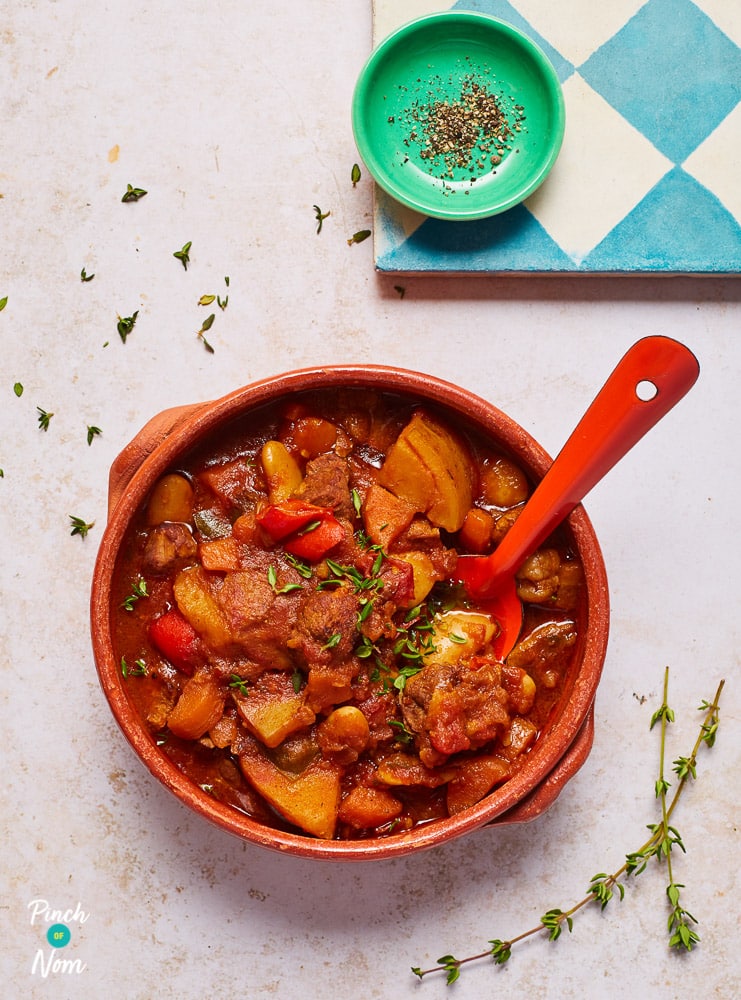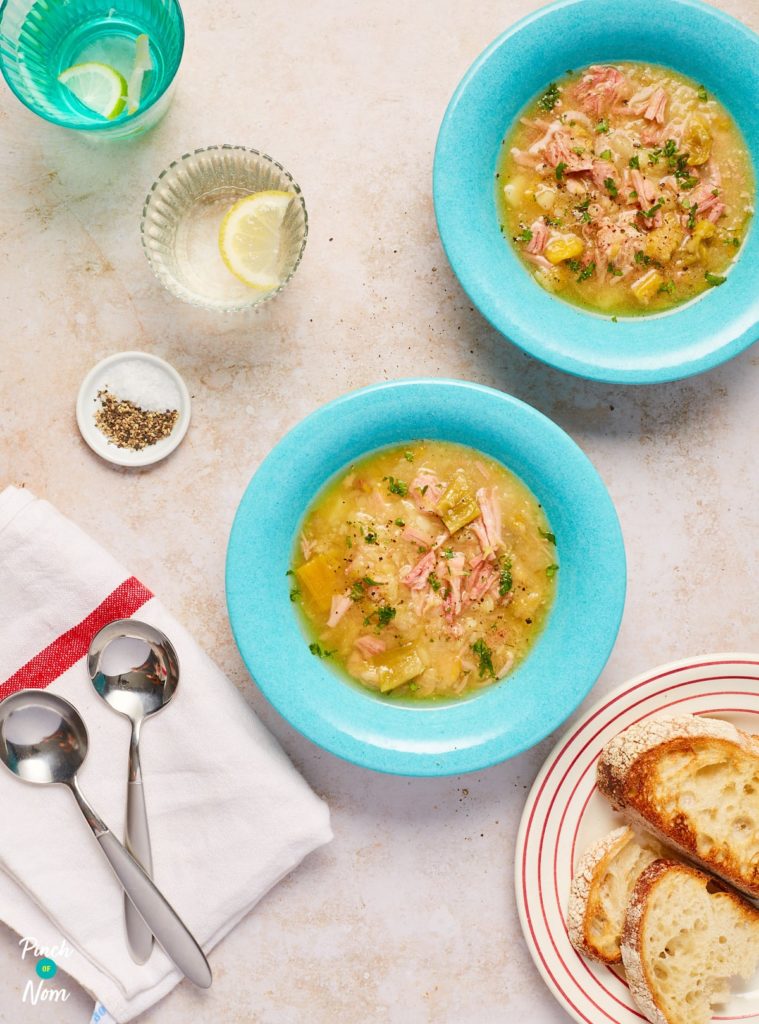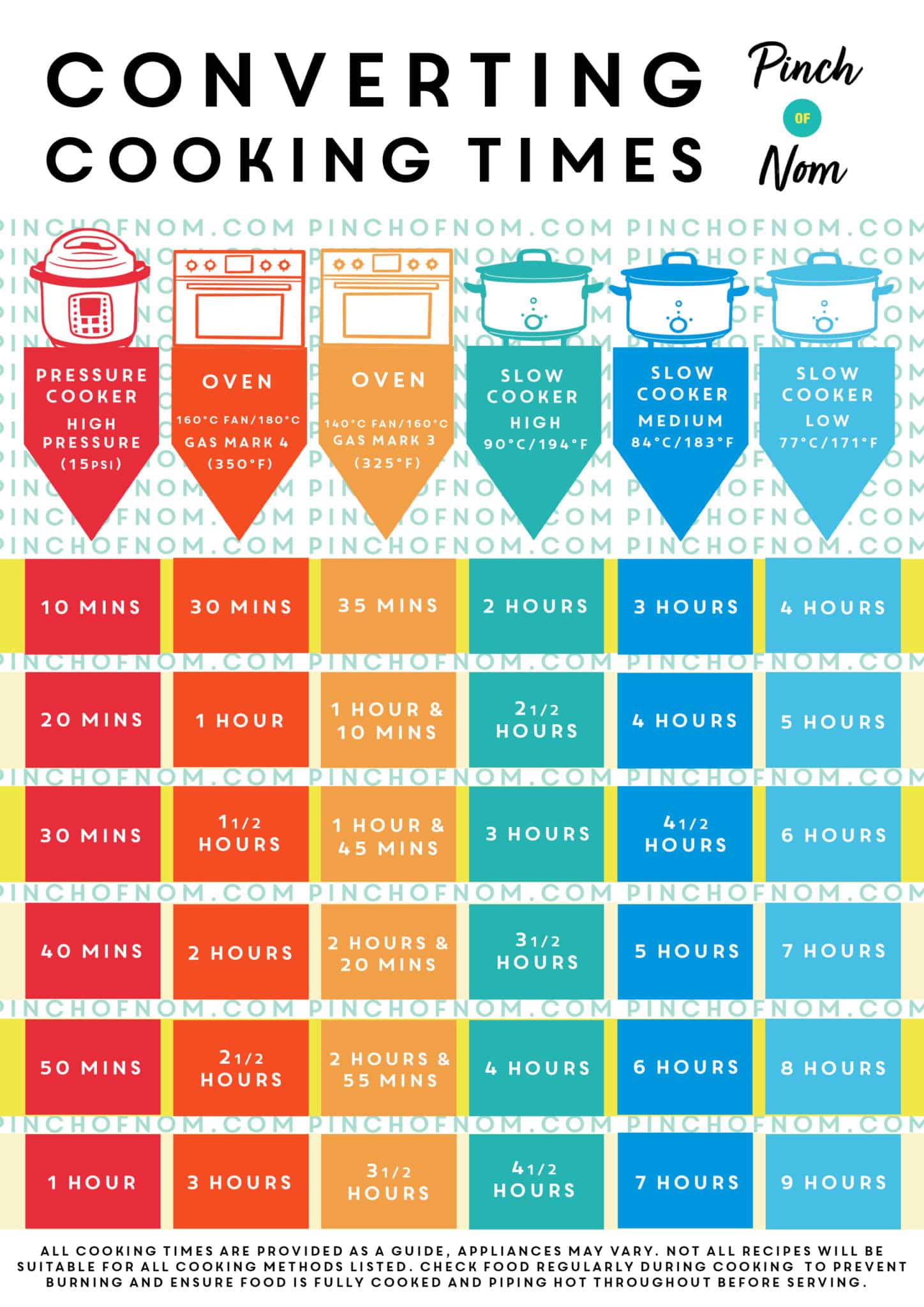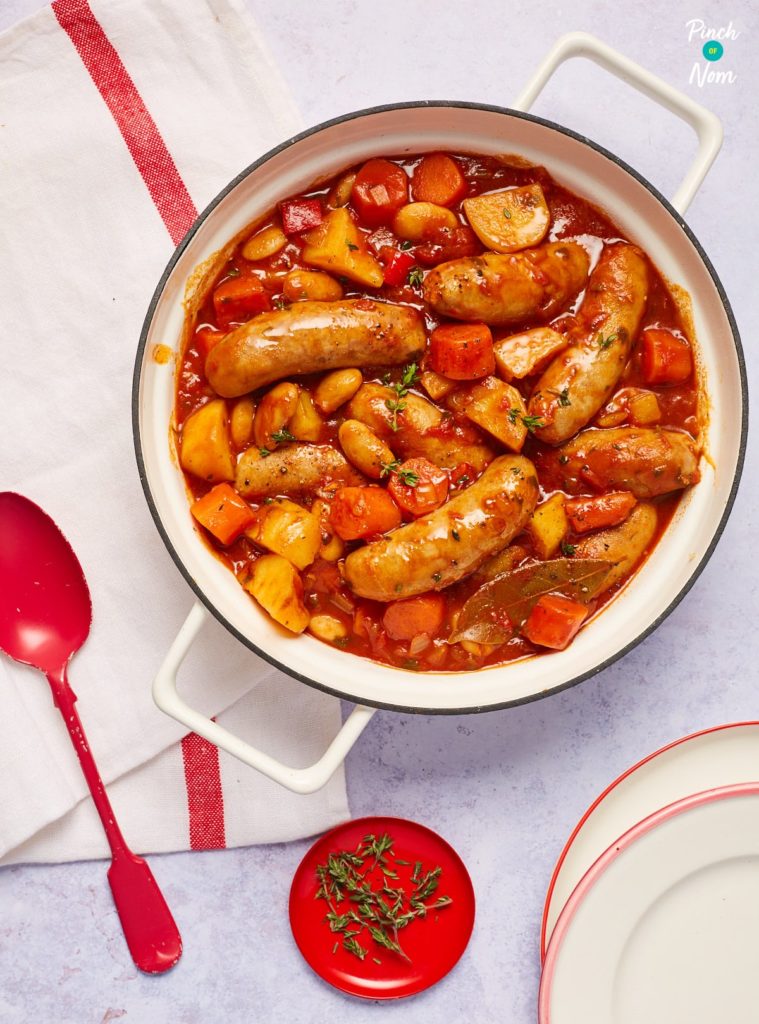How to Convert Recipes to Your Instant Pot®
One of the most frequent questions that we get asked is: ‘Can I cook this recipe in an Instant Pot®?’
The short answer is usually ‘yes’, but because of how the Instant Pot® works, there are some recipes and ingredients that just aren’t suitable to be cooked in this way.
We’ve put together a list of dos and don’ts, as well as some handy conversion times to help give you the best chance of success.
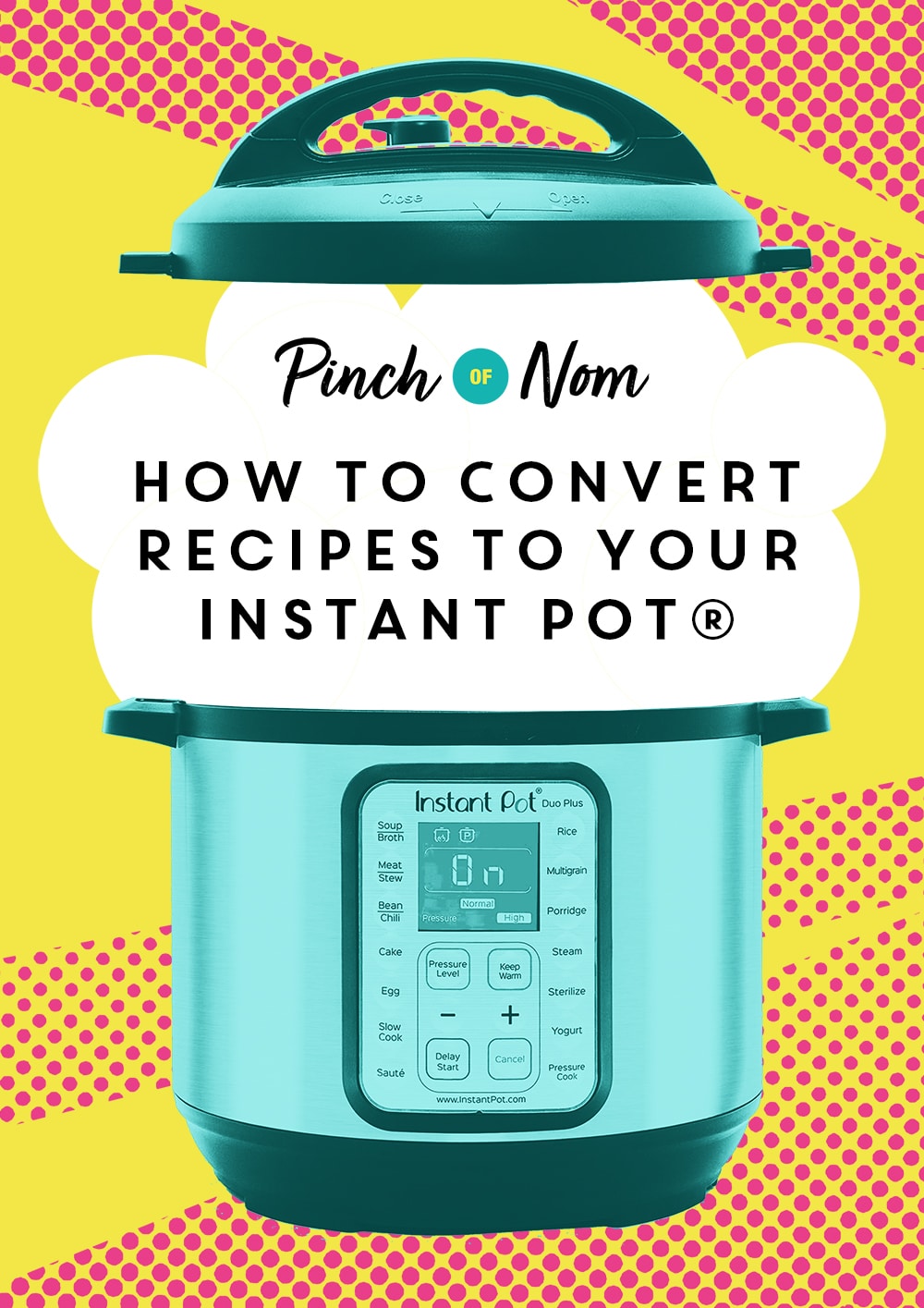
Converting recipes to be cooked in the Instant Pot®.
The first thing you need to know about converting recipes to be cooked in an Instant Pot® is that you should expect a lot of trial and error, so don’t feel downhearted if something doesn’t quite work out how you expected it to!
We’ve included some conversion examples to help you work out how long you should cook a recipe for, but if you’re still not completely sure then don’t panic.
Go for the shorter cooking time and if you find that your recipe isn’t fully cooked after this initial cook time, then pop the lid back on and cook it for a bit longer.
Remember, you can always continue cooking an undercooked recipe, but you can’t fix an overcooked one!
What should I avoid?
This is in no way an extensive list but in general you can organise ingredients and recipes into two categories: those suitable for Instant Pot® cooking and those that should be avoided.
At a glance, ingredients or recipes to use or avoid are:
DO use:
- Beans and legumes
- Eggs
- Fruits
- Grains
- Meats
- Recipes that need wet heat (so anything that needs steaming, boiling or poaching)
- Root vegetables
- Slow cooker recipes
- Soups and stews
- Recipes that already contain liquid (like stock or water)
- Recipes that need a longer cooking time
AVOID:
- Baked goods (Bread, cookies or cakes aren’t going to work)
- Dairy (You should only add dairy products at the end)
- Breaded foods (The breading will either go soggy or fall off completely)
- Recipes that need a crispy finish
- Recipes that need dry heat (Anything that needs to be grilled, fried or baked isn’t suitable)
- Recipes with thickeners like flour or cornstarch (Don’t add these at the start of the cooking time, instead you’ll need to add a slurry at the end)
- Very tender or expensive cuts of meat (Pressure cooking is ideal for cheaper, tougher cuts of meat)
- Vegetables that cook quickly (They’ll go all soggy and overcooked, so try to add these in at the end of cooking)
- Meals that normally cook quickly (Things like steak, burgers or stir frys should all be avoided!
Our top tips for Instant Pot® success.
Fill level
Pressure cookers like the Instant Pot® should never be more than ⅔ full for your own safety and in order to actually work properly.
The simple fact is that a full Instant Pot® isn’t going to come up to pressure.
If you’re using ingredients like rice or pasta, then remember that they expand during cooking and so you’ll probably need to reduce the amount you’re using.
A good rule of thumb when using things like beans, rice, grains or pasta is to only fill your Instant Pot® to the ⅓ mark.
Your other ingredients can then be added on top, but remember not to fill any higher than the ⅔ mark!
Pressure setting and pressure release
The pressure setting that you choose will, of course, vary based on your ingredients or the recipe that you’re cooking.
In general however, you should be using HIGH pressure for pretty much everything apart from things like delicate cuts of seafood or veg that just needs to be lightly cooked.
In terms of the pressure release if you’re not sure then just use the QR (quick release) setting, as certain ingredients can overcook very quickly at the end of the cooking time if you’re using NPR (natural pressure release).
Soups and stews like our Slow Cooker Balsamic Beef Stew or our Ham, Leek and Potato Soup work really well with an NPR, as do dishes that use tough cuts of meat.
How much liquid should I use?
The Instant Pot® relies on liquid to achieve pressure, so the right amount is really important.
It’s a good idea to try and adapt recipes that already have some liquid in them, but bear in mind that too much water can also be an issue.
As there’s so little water lost when pressure cooking, if your recipe has a lot of ingredients with a high water content then you’ll need to reduce the amount of additional liquid you add.
For dishes like soups, reduce the amount of liquid you’re using by about ½ a cup (approximately 115ml) so that your end result is not too watery.
For most other recipes without a lot of liquid in them, a good rule of thumb to follow is to add at least 1 cup (approximately 230ml) of water for a 5.7 litre (or 6 quart) Instant Pot®, and 1 ½ cups (about 350ml) for an 8 litre (8 quart) Instant Pot®.
Cooking with a range of different ingredients
Different ingredients take different amounts of time to cook so it’s important to add them in stages throughout the cooking time.
Ingredients that take longer to cook will need to be put into the Instant Pot® first, and then any quicker ingredients can be added at the end and cooked on the sauté setting.
If you’re adding meat to something like a soup, then make sure that you cook it on the sauté setting or in a pan to seal it off before adding it to your recipe.
Things like pasta and rice can be added directly into the dish to cook, but remember to be aware of how full your Instant Pot® is, and make sure you add it at the right time so it doesn’t overcook.
It’s also worth bearing in mind that pressure cooking can interfere with flavours, so you may find that you need to add an extra stock cube or some additional spices or seasoning.
This will be down to personal preference and, again, will probably involve some trial and error before you get it exactly right!
We’d recommend adding a little at a time and then checking your dish as you go so that you don’t accidentally add too much all at once.
Can I cook a slow cooker recipe in my Instant Pot®?
Yes, you definitely can although there are some specific changes you’ll need to make.
The first thing to note is that unlike slow cookers, the Instant Pot® won’t produce lots of extra liquid due to condensation, so make sure that you adjust the amount of liquid you use.
It may not be an issue in a slow cooker, but in an Instant Pot® the density of your meat matters. Big joints of meat should be cut into smaller pieces to reduce the amount of time they take to cook.
Can I cook an Instant Pot® recipe in the oven?
Yes you can, but this is a bit trickier and relies much more on trial and error than converting an oven recipe to the Instant Pot®.
You may also need to make a few changes to your recipe so that you still get the right outcome.
For example, as Instant Pots® rely on liquid in order to reach pressure, you may need to adjust the amount of liquid in your recipe if you’re cooking it in the oven instead.
Remember that you may need to adjust the amount of seasoning or spices used as pressure cooking can affect the flavour of a recipe, so you may find you need less if you’re cooking an Instant Pot® dish in the oven.
General conversion times
These times are just a rough guide only, so please make sure that everything is cooked through before serving. If not, just cook it for a bit longer.
Remember that a lot of converting recipes to work in the Instant Pot® is trial and error, so if something isn’t quite right then try again!
To try and make things a bit easier, we’ve put together a really handy conversion guide to help you convert recipes at a glance! More detailed info around converting for each method can be found below the guide.
Converting recipes from oven/hob method to the Instant Pot®:
Take the total cooking time of the recipe and divide it by 3.
So, for a dish that has a total cook time of 30 minutes in the oven, you’ll need to cook it for 10 minutes in the Instant Pot®.
Similarly, a recipe that takes an hour to cook in the oven, would need 20 minutes in the Instant Pot®.
Converting slow cooker recipes to the Instant Pot®:
Start off with the cooking time required for a HIGH setting and then convert this into minutes (by multiplying by 60), before dividing by 10.
It may sound complicated at first glance, but we promise it’s actually really simple, and once you get the hang of it you’ll be converting recipes like a pro!
If we take our Slow Cooker Sausage Casserole recipe for example, this needs to be cooked for 6-8 hours on low/medium, or 5 hours on high. So just take the 5 hours and convert it into minutes – 5 multiplied by 60 is 300 – and then divide it by 10 – which gives us 30.
So, our Slow Cooker Sausage Casserole would need to be cooked for 30 minutes on high in the Instant Pot® (and finished on the sauté setting once your butter beans and stock pot have been added).
Converting Instant Pot® recipes to be cooked in the oven
As a very rough rule of thumb, to cook an Instant Pot® recipe in the oven, you should multiply the cooking time by 3 and cook at around 180°C (160°C fan).
So, for example, a recipe that takes 10 minutes on high in the Instant Pot® would take around 30 minutes in the oven.
However, if you’re cooking with certain cuts of meat such as stewing steak, ox cheeks or brisket, then you should cook these at a lower temperature (around 160°C (140°C fan).) for a little bit longer.
This is because cuts of meat like these need to be cooked slowly on a low temperature so that they’re more tender.
We’d advise still multiplying your Instant Pot® cooking time by 3 and then checking on your dish every 15 minutes or so after this point. You may also then need to add some more liquid if it looks like it’s drying out.
Remember that not all ovens are the same and so you may find that your recipe will cook quicker or slower than this, so please make sure that you keep an eye on your dish as it’s cooking.
We’d recommend using a food thermometer to ensure that your food is cooked through inline with the NHS guidelines that state that food should reach 70°C and stay at that temperature for 2 minutes.
Whether you’re converting a recipe from an oven, hob or slow cooker method to an Instant Pot®, a lot of it is down to trial and error, so it may take a couple of tries before you master it, but don’t give up!
Don’t forget to share your Instant Pot® successes and top tips with us over on our Facebook Group. We love seeing all of your delicious creations!
